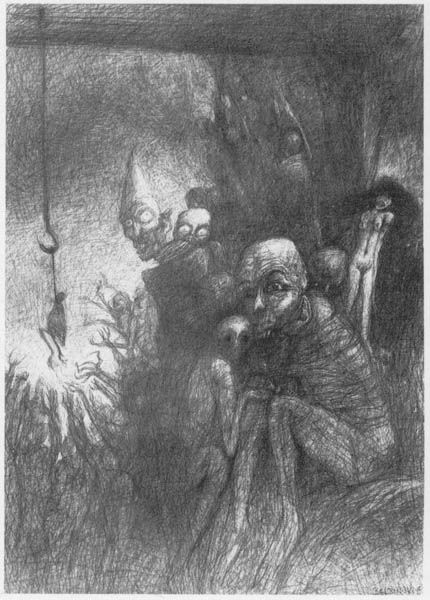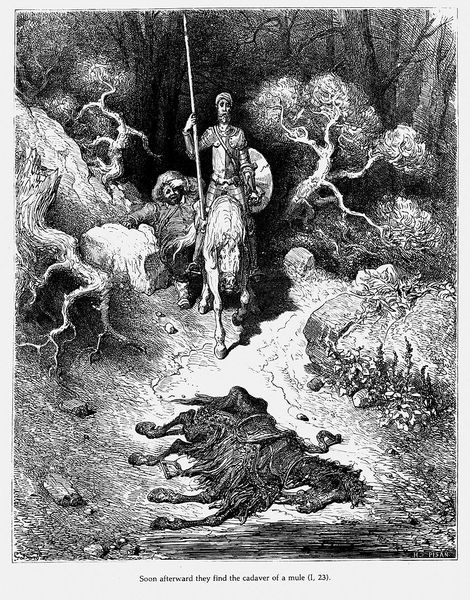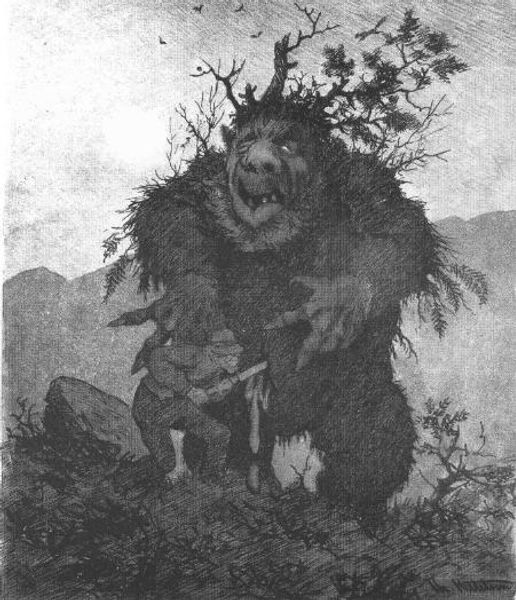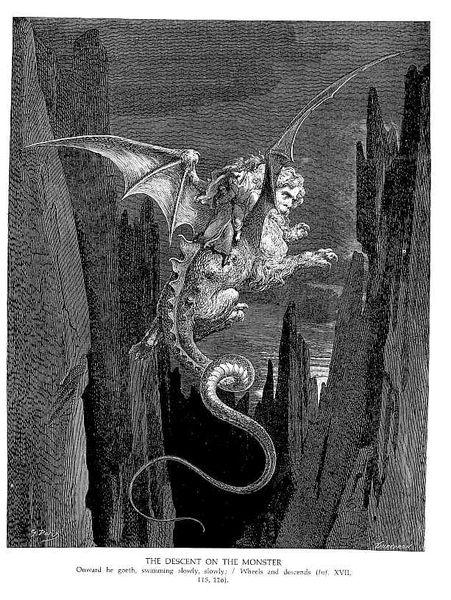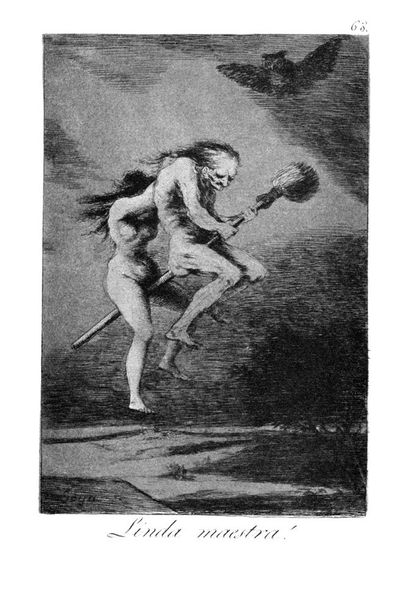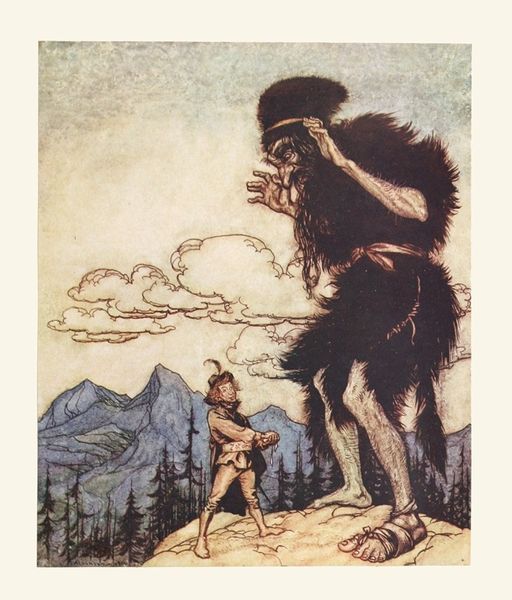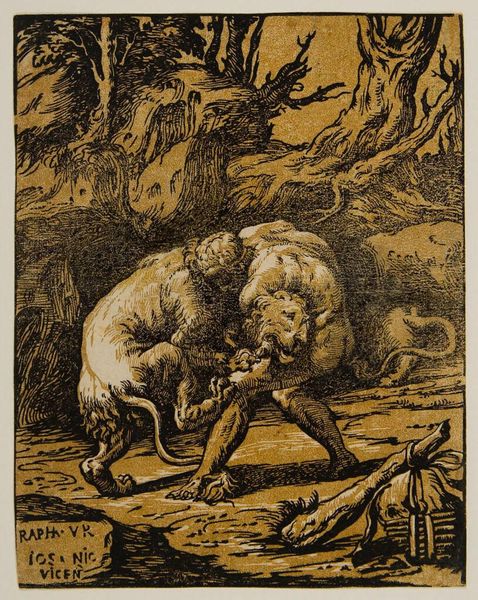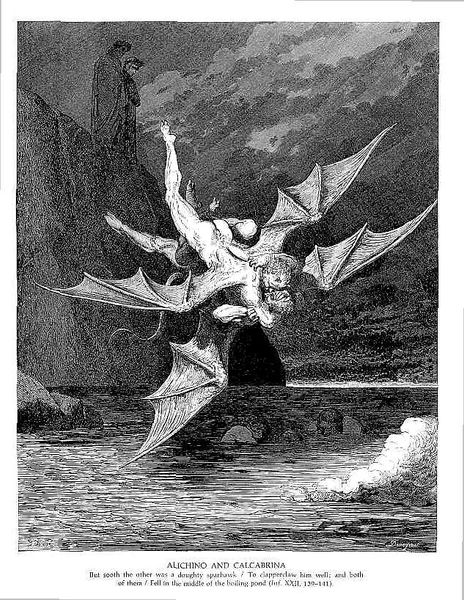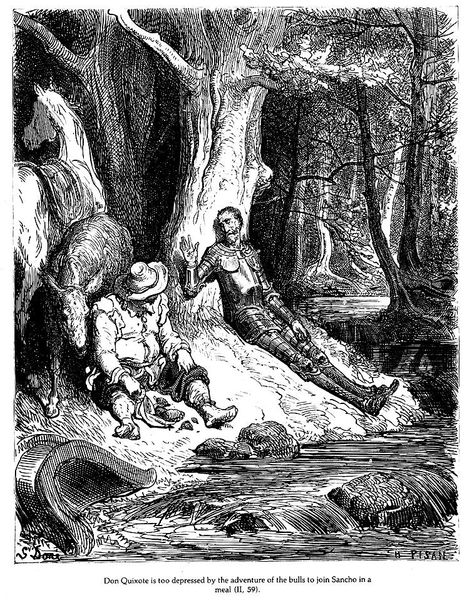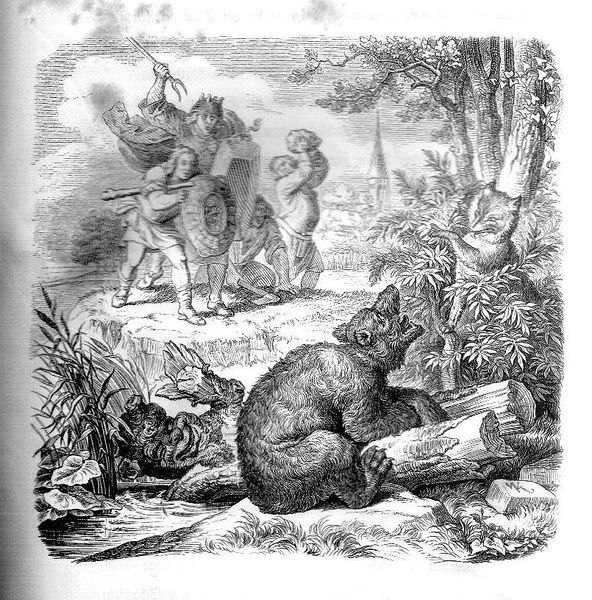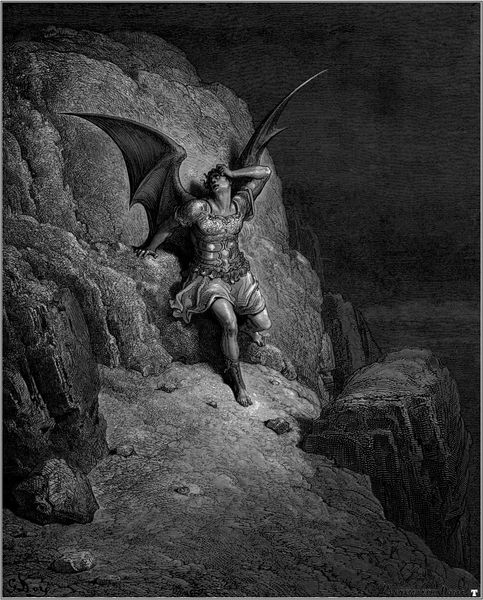
drawing, ink
#
drawing
#
landscape
#
figuration
#
ink
#
symbolism
Copyright: Public domain
Editor: Here we have "The Dying Mountain Troll," an 1892 ink drawing by Theodor Kittelsen. It's so detailed, almost like a woodcut, and it creates a very somber, even melancholic mood. What do you see in this piece, especially in the context of its time? Curator: It’s essential to see Kittelsen’s trolls not merely as mythical creatures, but as symbols deeply rooted in Norwegian cultural anxieties of the late 19th century. Norway was grappling with its identity, its relationship to nature, and its emerging sense of nationhood separate from outside influence. What is the monster but the externalisation of these fears and social tensions, the struggle for autonomy against cultural dominance, like the loss of traditions or industrial encroachment? Editor: That makes sense. It’s interesting how the troll’s multiple faces could represent these competing internal anxieties. Curator: Exactly. The troll's grotesque features are a far cry from the romanticized ideals often seen. Kittelsen presents us with the monstrous other—an embodiment of what society fears or represses, linking directly to social anxieties and cultural preservation movements that romanticised an ideal past. We see the dying troll as the disappearance of such tradition, reflecting not only loss but a stark commentary on the forces shaping national identity and environment. Editor: So it's about more than just a dying troll, it represents a nation in transition? Curator: Precisely. How does the composition—the dying figure, the craggy landscape— reinforce these anxieties? Are there elements which challenge the concept of cultural identity in today’s globalised world? Editor: I guess the enduring image suggests that fears of losing cultural identity is a constant struggle, a continuous concern for society? I never considered it that deeply before! Curator: Art constantly speaks with the present and can ignite many perspectives from those willing to listen.
Comments
No comments
Be the first to comment and join the conversation on the ultimate creative platform.

